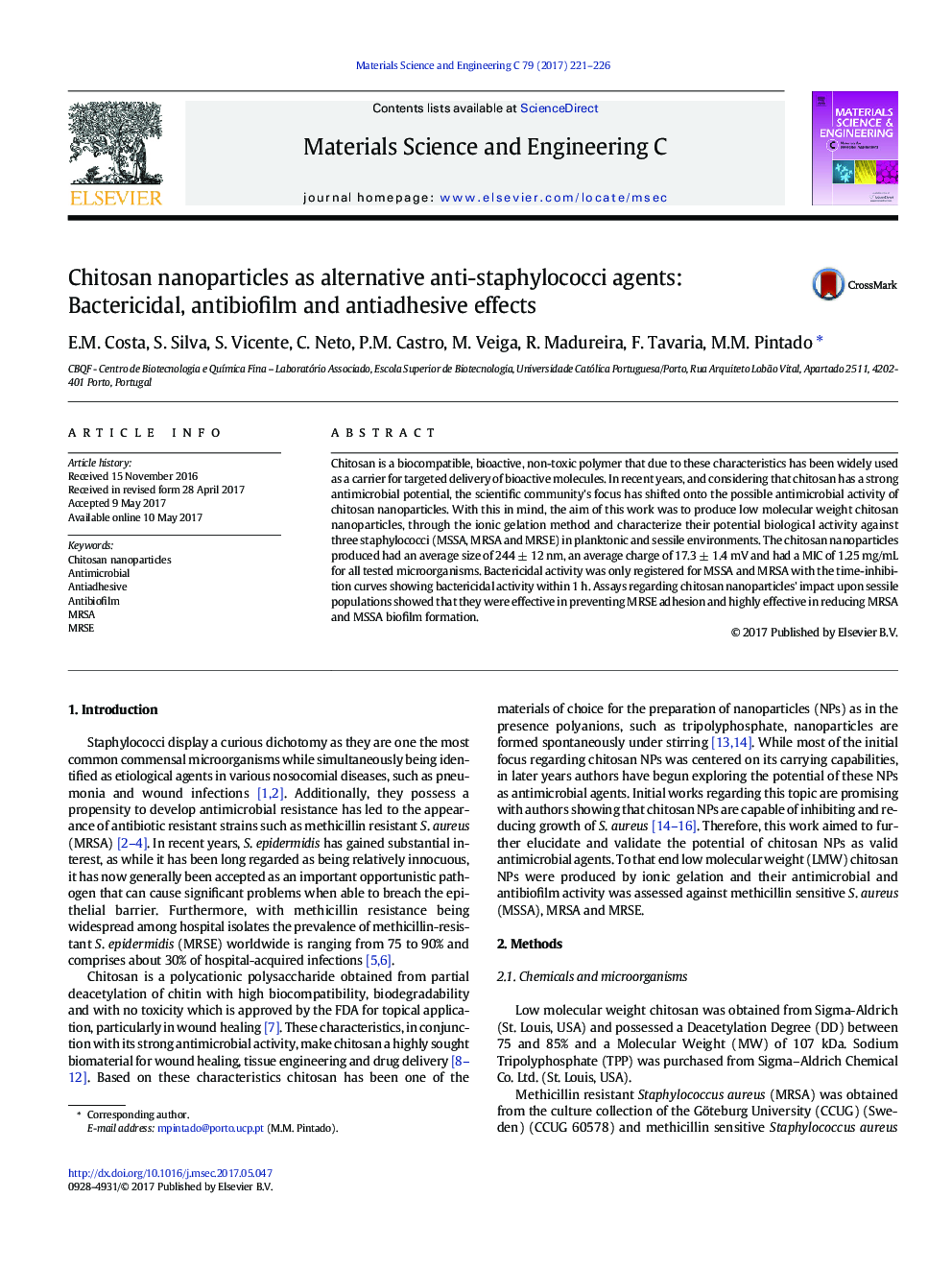| Article ID | Journal | Published Year | Pages | File Type |
|---|---|---|---|---|
| 5434723 | Materials Science and Engineering: C | 2017 | 6 Pages |
â¢Chitosan nanoparticles inhibited planktonic and sessile growth.â¢Nanoparticles were effective against methicillin resistant microorganisms.â¢A MIC of 1.25 mg/mL was found for MRSA, MSSA and MRSE.â¢Nanoparticles had bactericidal activity upon MRSA in under 1 h.â¢Nanoparticles inhibited staphylococcal adhesion and biofilm growth.
Chitosan is a biocompatible, bioactive, non-toxic polymer that due to these characteristics has been widely used as a carrier for targeted delivery of bioactive molecules. In recent years, and considering that chitosan has a strong antimicrobial potential, the scientific community's focus has shifted onto the possible antimicrobial activity of chitosan nanoparticles. With this in mind, the aim of this work was to produce low molecular weight chitosan nanoparticles, through the ionic gelation method and characterize their potential biological activity against three staphylococci (MSSA, MRSA and MRSE) in planktonic and sessile environments. The chitosan nanoparticles produced had an average size of 244 ± 12 nm, an average charge of 17.3 ± 1.4 mV and had a MIC of 1.25 mg/mL for all tested microorganisms. Bactericidal activity was only registered for MSSA and MRSA with the time-inhibition curves showing bactericidal activity within 1 h. Assays regarding chitosan nanoparticles' impact upon sessile populations showed that they were effective in preventing MRSE adhesion and highly effective in reducing MRSA and MSSA biofilm formation.
